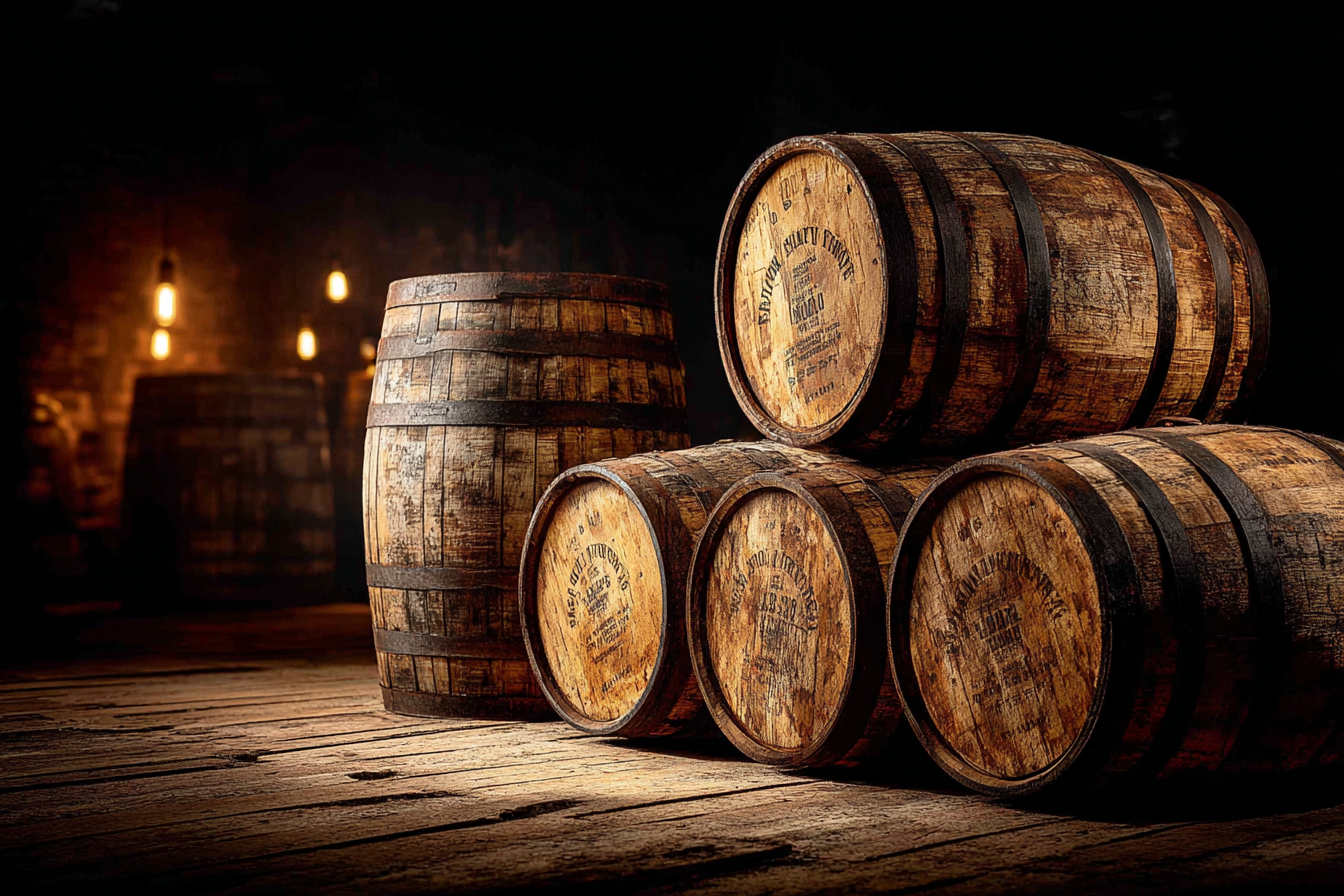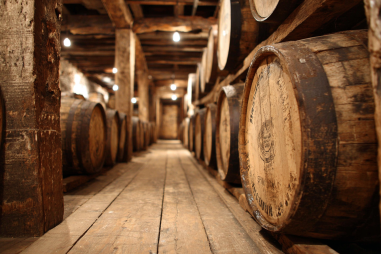American wild beer has carved out a distinct niche in the craft beer world, celebrated for its funky, tart, and often unpredictable flavor profiles. A significant part of what makes these beers so intriguing is the way they are aged, particularly in wooden barrels. This aging process is more than just time in a container; it’s a dance of biology, chemistry, and art that transforms the beer into something complex and extraordinary. Let’s dive into the fascinating world of aging American wild beer and the barrel techniques that shape its unique character.
The Crucial Role of Aging in Wild Beer Production
Aging is fundamental in developing the complexity that defines American wild beers. Unlike many beers consumed fresh, wild ales thrive on extended maturation periods that allow wild yeast strains and bacteria—like Brettanomyces, Lactobacillus, and Pediococcus—to work their magic. These microorganisms slowly metabolize sugars, producing a range of flavors from sour and tart to funky and earthy. Without adequate aging, these flavors would remain raw, one-dimensional, and sometimes harsh.
The aging process also allows the beer to mellow, balancing acidity and funkiness with more rounded, integrated flavors. Time in the barrel facilitates oxygen interaction, which in controlled amounts helps develop subtle oxidative notes often appreciated in wild beers. Overall, aging turns a rough sketch into a masterpiece, making patience and careful environmental control essential components of successful wild beer production.
Exploring Barrel Types and Their Influence on Flavor
The choice of barrel is crucial, as the wood itself imparts unique characteristics into the beer and serves as a home for the microbial community that influences fermentation and aging.
Oak Barrels: The Classic Choice
Oak is the most commonly used wood for aging wild beers, prized for its porous nature, which allows gentle oxygen exchange and flavor absorption. American oak barrels tend to lend sweeter, vanilla-like notes with hints of coconut, which can complement the tartness of wild ales nicely. French oak, on the other hand, offers more subtle spice and tannin profiles, contributing to a more elegant mouthfeel.
Wine and Spirits Barrels
Many brewers utilize barrels that previously held wine, bourbon, or other spirits. These barrels bring additional layers of complexity:
- Bourbon barrels: Infuse whiskey-soaked wood flavors such as caramel, vanilla, and toasted oak.
- Wine barrels: Especially red wine barrels, introduce fruity, tannic, and sometimes tannin-driven dry notes.
These secondary flavors combine with the wild yeast and bacteria activity to produce deeply nuanced beers.
Alternative Wood Barrels
Some adventurous brewers experiment with cherry, chestnut, or other hardwoods, adding distinct woody or fruity notes and altering the interaction with microbes. The nuances from these less common woods can elevate wild beers into new flavor territories.
Managing the Aging Environment for Optimal Results
Barrel aging wild beers isn’t simply about filling barrels and waiting; the environment in which the barrels rest plays a critical role in the development of flavor and microbial activity. Temperature, humidity, and air quality all influence how the beer matures.
- Temperature: Cooler environments generally slow microbial activity, promoting longer, more subtle evolution of flavors, while higher temperatures accelerate maturation, but risk creating off-flavors if not carefully monitored.
- Humidity: Proper humidity levels help maintain barrel integrity. Too dry, and barrels may dry out and crack; too wet, and there’s risk of mold or unwanted microbial contamination.
- Microbial Flora: The ambient microbes in the aging space—including wild yeasts and bacteria—also contribute to the character of the beer, making cellar management and cleanliness important to direct the right kind of fermentation.
Consistent monitoring and occasional barrel maintenance—such as topping off evaporated beer or blending barrels—ensure the aging process is controlled and productive.
The Flavor Evolution During Barrel Aging
The journey of flavor transformation during barrel aging is complex and multi-dimensional. Early on, the wild yeast and bacteria begin converting residual sugars into acids and esters, which leads to the development of sourness, funk, earthiness, and sometimes a leathery or barnyard character. Over months or even years, these flavors evolve and integrate.
Oxygen slowly permeating through the wood encourages oxidation reactions that can deepen maltiness and add sherry-like notes, while the breakdown of wood tannins adds dryness and structure to the beer, balancing the acidity. Additionally, aromatic compounds absorbed from the barrel, such as vanilla, toast, coconut, or spice, layer in, creating intricate flavor mosaics.
The end result is a beer with a complex interplay of acidity, funk, woodnotes, and subtle oxidative qualities—a balance that is elusive without the time and environment afforded by barrel aging.
The Art of Blending and Bottling Aged Wild Beers
After aging, many brewers choose to blend several barrels to achieve the desired flavor profile, balancing attributes like acidity, funk, and wood influence. Blending allows for more consistency in a style that is inherently variable and provides an opportunity to enhance complexity by combining different aged batches.
When bottling, brewers often incorporate additional yeast or sugars for bottle conditioning, enabling the beer to develop carbonation in the bottle and continue subtle maturation. Proper sanitation and controlled storage conditions prevent spoilage, ensuring the beer remains vibrant and flavorful when it reaches drinkers. Some beers continue evolving in the bottle, gaining even richer profiles with extended cellar time.
Examples of Celebrated American Wild Beers and Their Aging Practices
Several American breweries have built reputations on their mastery of wild beer aging and barrel techniques:
- Jelly King by Russian River Brewing Co. is aged in oak barrels and is renowned for its complex sour and funky profile that matures over years.
- Fou’ Foune by The Bruery Terreux employs French oak barrels and fresh stone fruits during aging, creating a delicately balanced wild ale.
- Supplication by Russian River is aged in pinot noir barrels, absorbing subtle wine notes while embracing Brettanomyces-driven funk.
- Coolship Resurgam from Jester King Brewery is spontaneously fermented and aged in a variety of barrels, including oak and chestnut, taking advantage of Texas’s unique environmental terroir to develop its signature profile.
These examples showcase the diversity and artistry involved in barrel aging American wild beers, highlighting how techniques and barrel choices affect flavor outcomes.
Capturing the Essence of Wild Beer Through Maturation
Mastering barrel aging methods unlocks the full potential of American wild beers. This artful process, marrying microbial fermentation with the nuanced influence of wood and time, results in beers filled with depth, complexity, and character—qualities that are difficult to replicate in any other way.
For brewers and enthusiasts alike, understanding and appreciating the aging and barrel techniques is key to enjoying and crafting wild ales that are truly extraordinary. It’s a journey that requires patience, precision, and passion but rewards with beers that tell unique stories one sip at a time.







